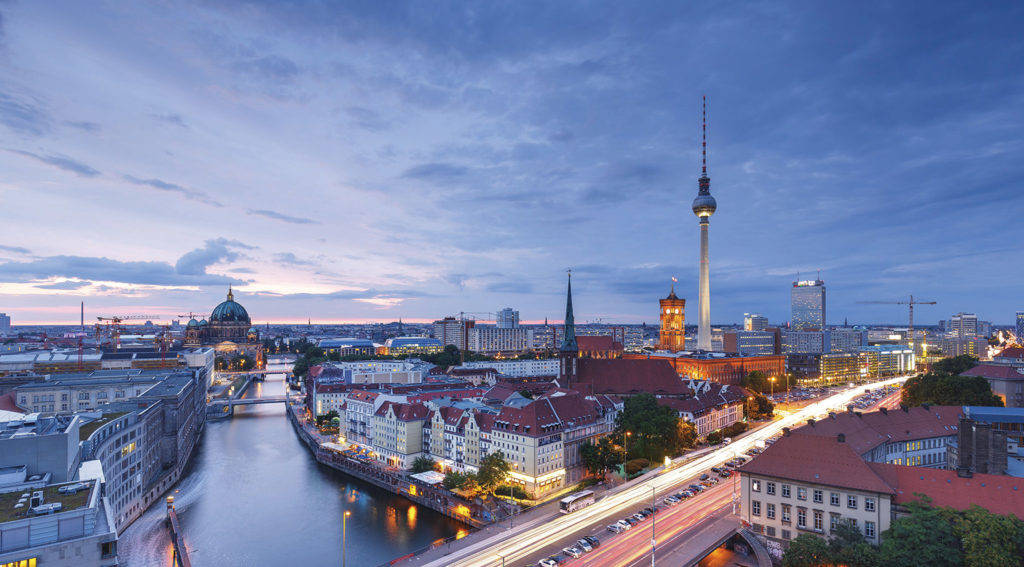
Smart investors seek out the best cities, rather than the best countries, when looking for the most competitive places to put their money. Alice Breheny, global head of research at TH Real Estate, looks at where the most promising opportunities are
The top 100 richest cities in the world account for around one-third of global GDP. To access 25% of available global output, you would need to target the 58 largest cities by GDP. So somewhere between 50 and 60 seems a sensible number of cities to start with when constructing a global real estate strategy.
Core investors should be mindful, though, that some cities might fall out of the global top 50 over the next decade. And some will see their position in the global hierarchy deteriorate, meaning they become less competitive.
While GDP is a better guide to the depth and maturity of real estate markets than population, it is somewhat crude – given the distinct drivers of each real estate subsector. For office investments, the financial and business services (FBS) contribution to GDP is probably a more appropriate proxy for demand. FBS output is concentrated in fewer cities than wider GDP and would give investors focused on offices a shorter list of target markets: the top 15 cities account for one-third of global FBS output. This is expected increase to around 20 cities by 2030 as we see the rising importance of cities in emerging economies.
FBS output is a recognised driver of demand for office property, but we do encourage investors to avoid over-reliance on FBS and seek exposure to offices in markets that are driven, for example, by technology or energy. These complement investments underpinned by FBS, offering diversification benefits and a more comprehensive list of target markets.
For investors adopting city-based retail strategies, the list of appropriate cities is longer. The pool of available retail sales is more geographically dispersed than GDP, with 114 cities accounting for one-third of the global share. Furthermore, extensive retail opportunities exist outside core city limits (such as regional shopping centres or designer outlets). By 2030, we expect to see a smaller number of cities accounting for a greater share of retail sales, reflecting rapid rates of urbanisation in developing economies. Nevertheless, irrespective of where you are in the world, investing in retail, alongside offices, allows you to target more locations without compromising your risk profile. Logistics, PRS and other subsectors will, of course, open up further or alternative locations.
There is no prescriptive list of global cities. It will vary by sector and by risk appetite
If you start with a list of global cities and focus on the top 10 to 15 (which is the “strategy” of many international investors), you do not get the benefits of diversification because these cities can be closely correlated. Furthermore, this list is not terribly relevant for sectors other than offices, and will be heavily skewed to the US. While you may need to be invested in only 10-15 cities to be diversified, you need the ability to pick from a much longer list to achieve this.
In the US and Europe, where real estate markets are mature, we would expect a target list of cities to remain broadly unchanged, with each city’s status being well established. That is not to say, however, that we won’t monitor these regions for credible new entrants based on demographic trends, or emerging cities for enhanced strategies. Structurally, though, the US and Europe are very different. In the US, the top 10 cities get you access to 33% of GDP, or 60% of FBS GDP; while in Europe, where cities are much smaller, a longer target list is needed. We would target around 20 markets for core office opportunities in Europe and 35 for retail.
In Asia-Pacific, just five cities account for one-third of FBS GDP and are naturally the focus for core investors at present. But by 2030, this list will grow to 10 as the strongest growth is enjoyed by Tier 2 cities. There will be a significant reorganisation of cities within this group. Investors in Asia-Pacific should be prepared to consider a deeper pool of cities over time and be on the lookout for new global stars from this region. Again, investors in the retail sector should cast their nets wider still to take advantage of the fastest-growing middle classes.
There is no prescriptive list of global cities. It will vary by sector and by risk appetite, though for core investors with the pick of the globe we would suggest 50 as a starting point, with a narrower focus for office-only strategies. While we advocate targeting resilient cities across the globe to get access to the best opportunities and to maximise the benefits of geographical diversification, we believe you can still achieve diversification within any one region through understanding the unique drivers of each city, looking beyond gateway cities and targeting a mix of city personalities.
THREE CITIES TO WATCH OUT FOR

Austin
Austin was the US’s fastest-growing city in 2015, with more than 150 people arriving every day. It is economically strong. Job growth continues to outstrip population growth and unemployment is under 4%. Millennials are attracted by opportunities in the technology sector, affordable accommodation, and the burgeoning restaurant and music scene. As technology hubs in New York, San Francisco and Boston become increasingly expensive, Austin is emerging as the leading alternative in the US. Traditional measures of real estate attractiveness might not put Austin on a list of target markets, but demographic trends suggest otherwise and make the case for a more progressive approach to selecting cities.

Berlin
Underpinned by hi-tech and pharmaceuticals, Berlin has recently become recognised as Germany’s start-up capital. The city’s population is forecast to increase by more than 6% over the next 10 years, in contrast to the wider national trend, which should result in Berlin’s economic growth being well ahead of the German average. While Germany as a country might not look attractive in the global context, owing to its challenged demographic profile, Berlin is a shining example of why investors should target cities rather than countries when building a global strategy.

Beijing
Asia will see its share of global output and retail sales increase markedly over the next couple of decades, with Beijing looking set to steal the show here. At present, Beijing ranks 19th globally in terms of total GDP, but it is expected to rank second by 2030. In terms of retail sales, Beijing already ranks second globally, having overtaken New York in 2013, and it is expected to take the number-one spot by 2021, knocking Tokyo off its current position. Shanghai is also enjoying rapid growth in retail sales and may well take Tokyo’s second position by 2030. In less than 15 years, the world’s top 10 retail markets in terms of the volume of available sales is likely to comprise nine Asian cities, with New York in 10th place.
Alice Breheny is global head of research at TH Real Estate










